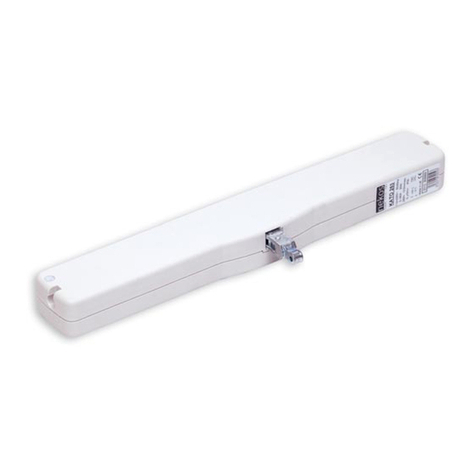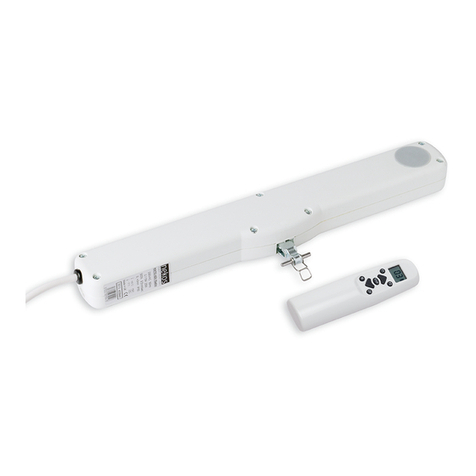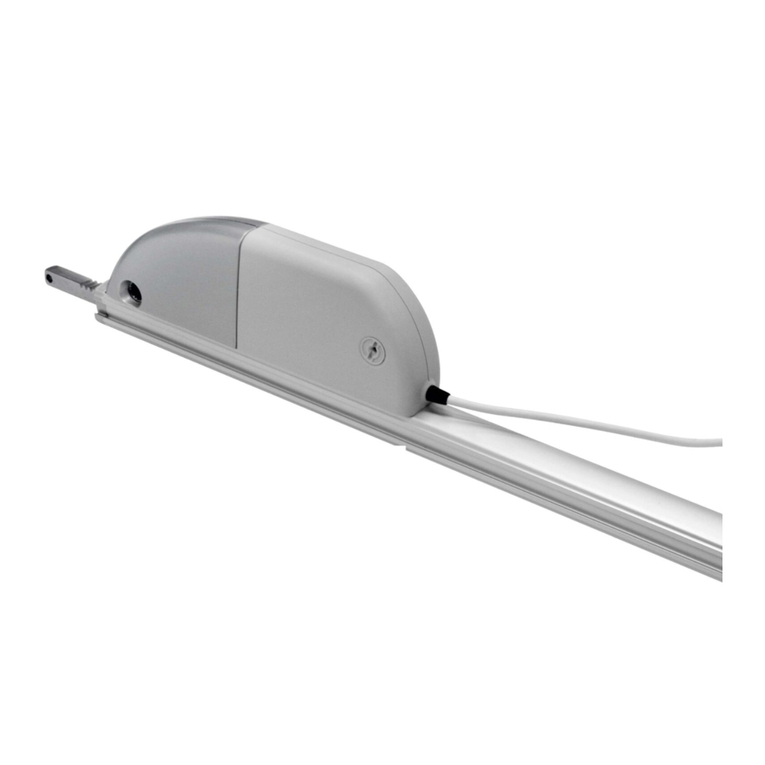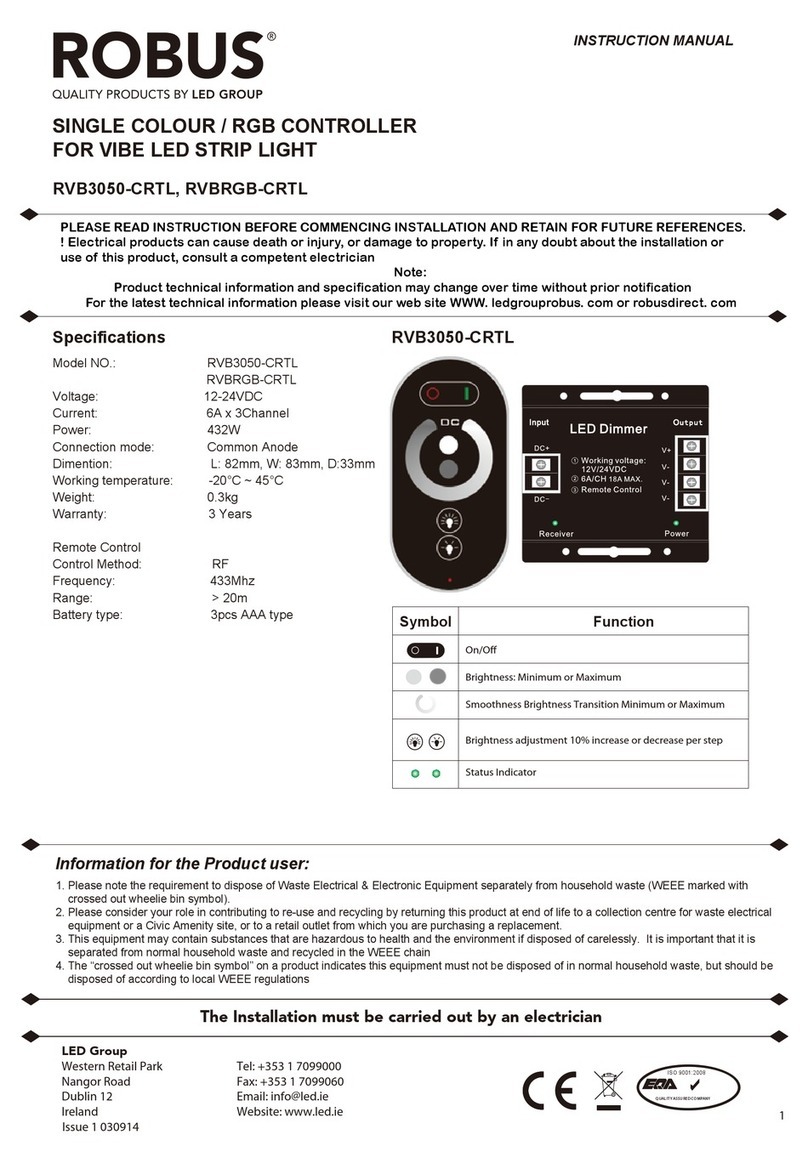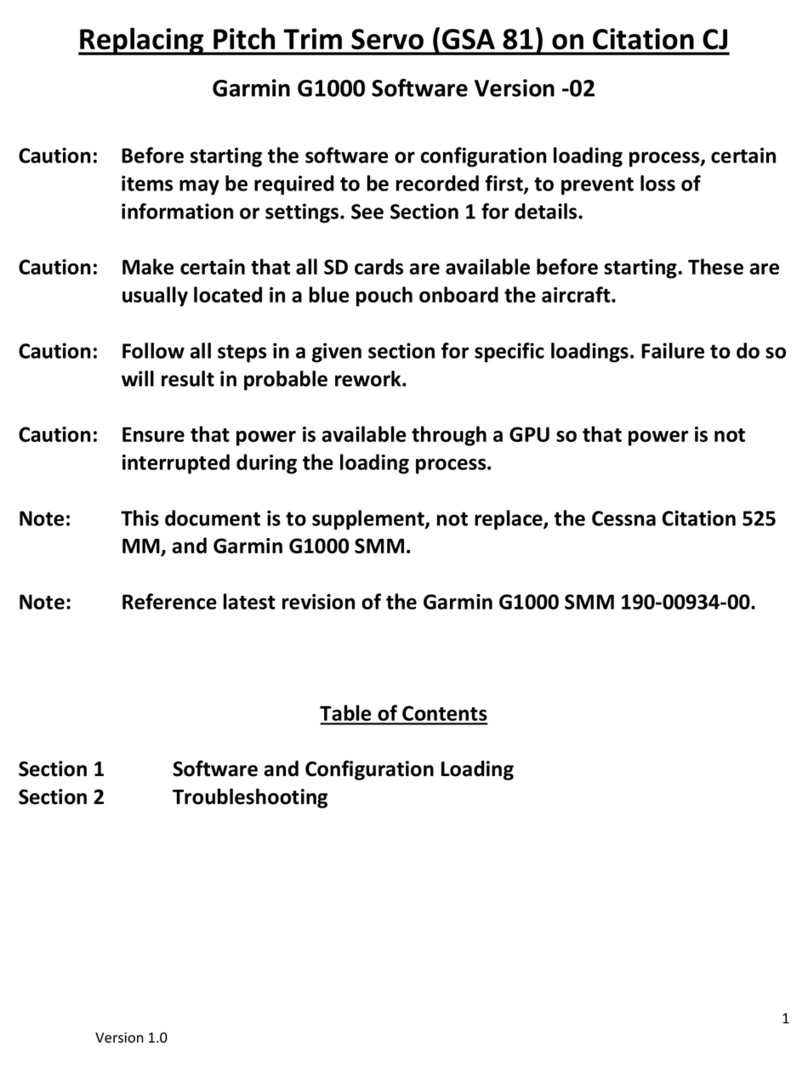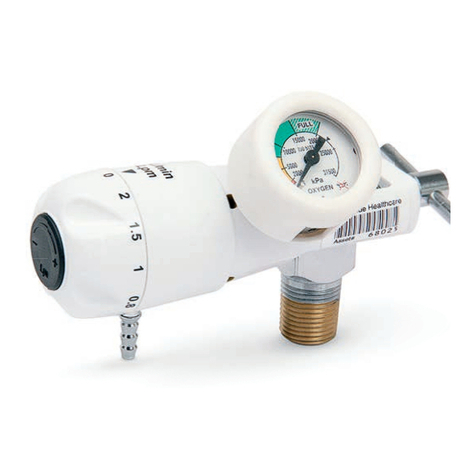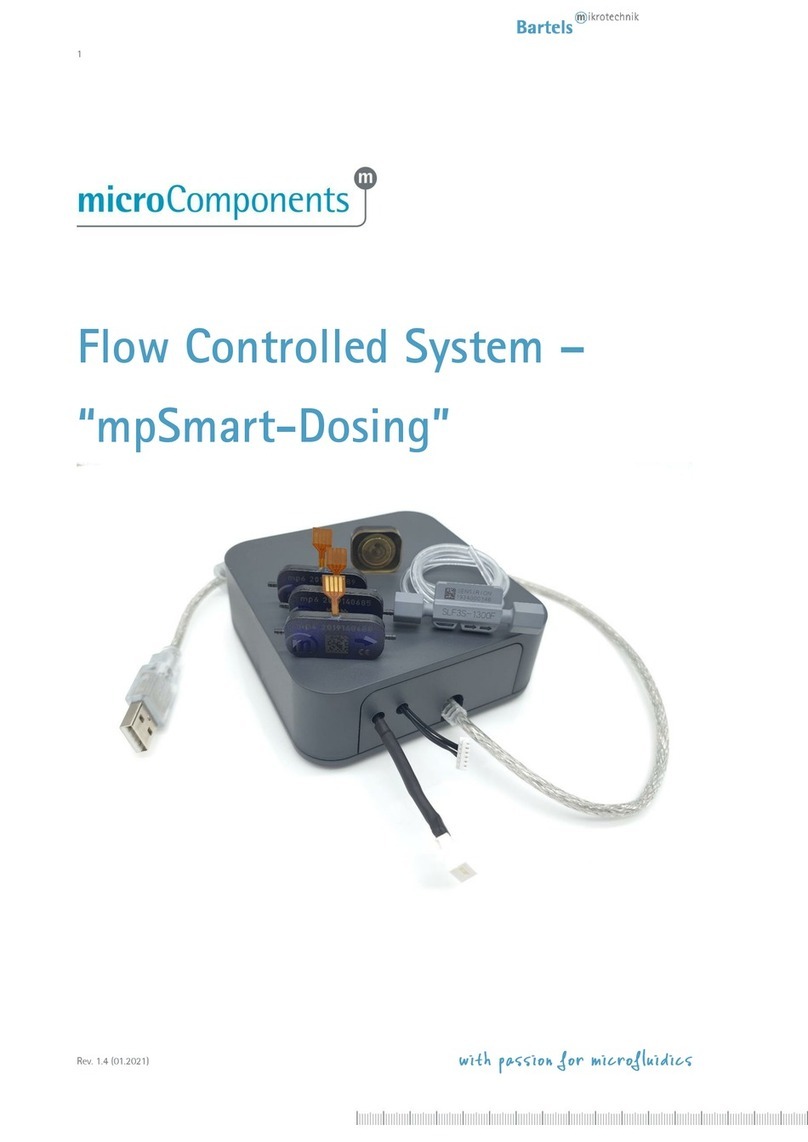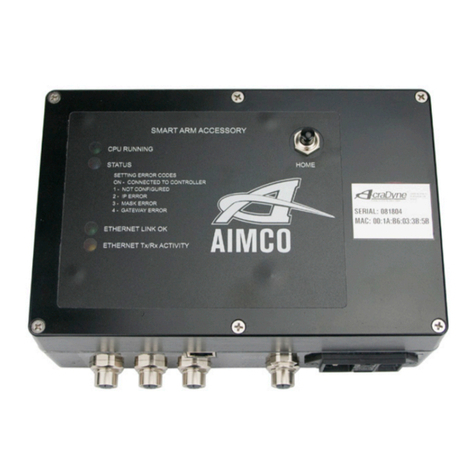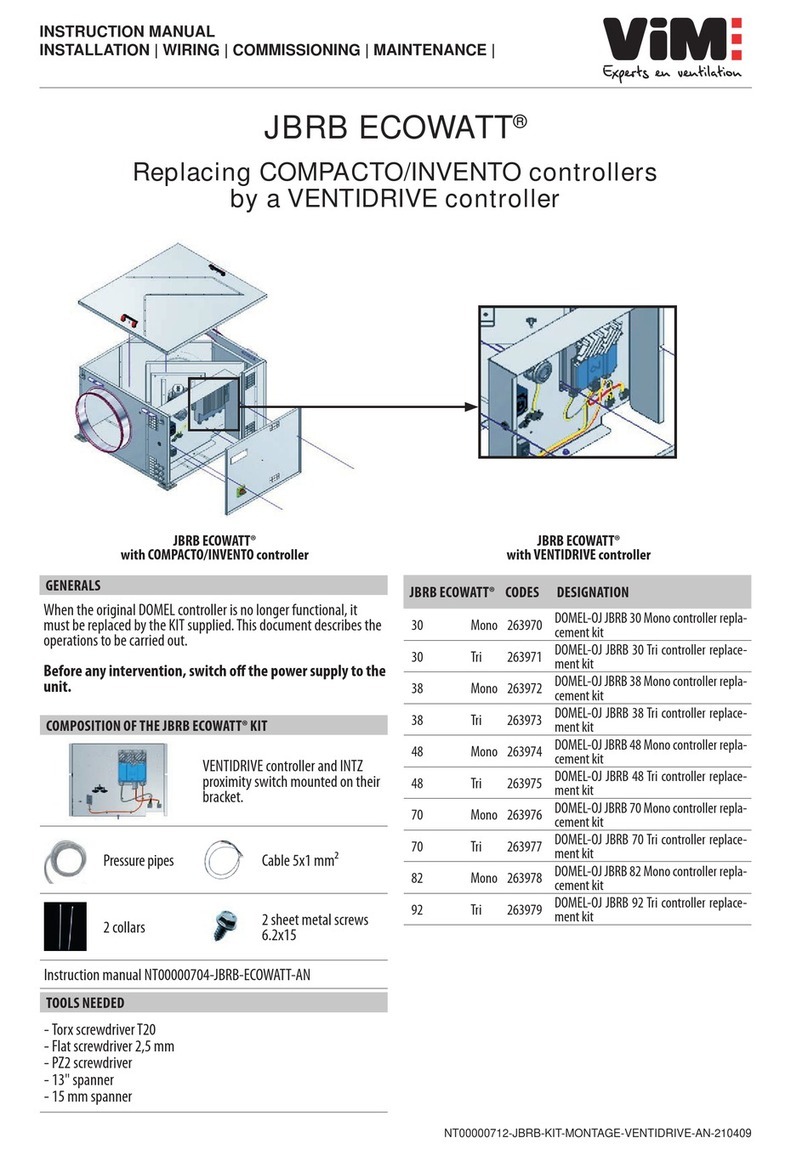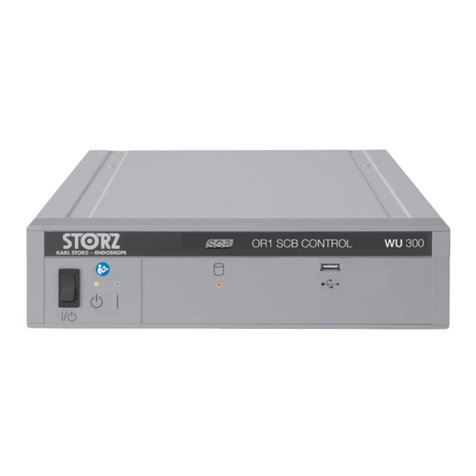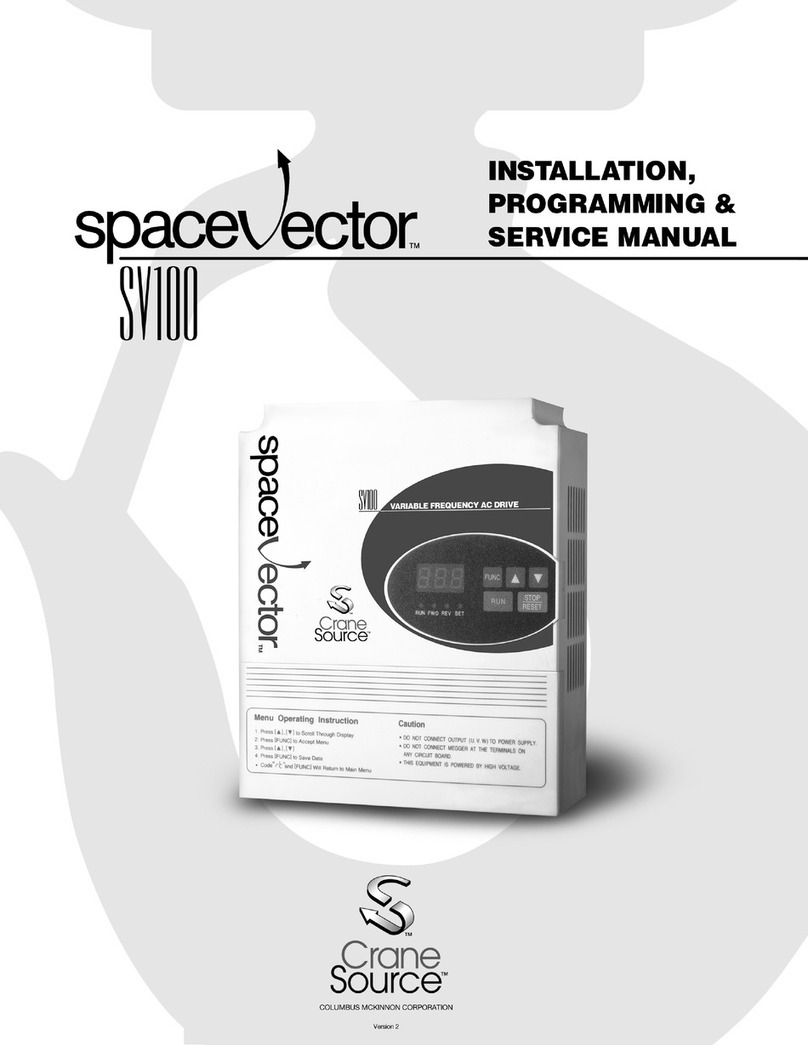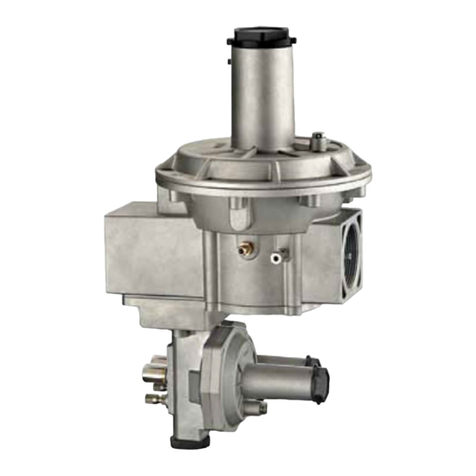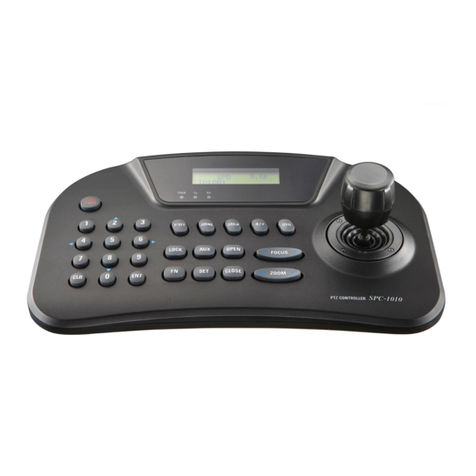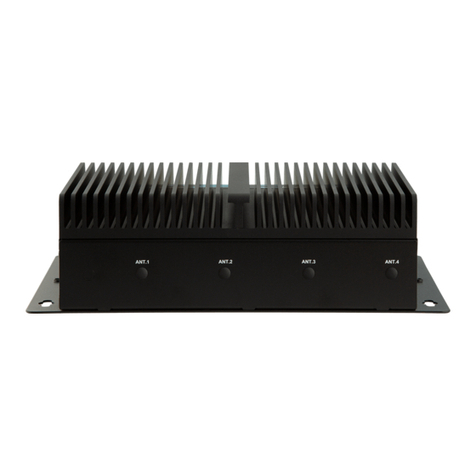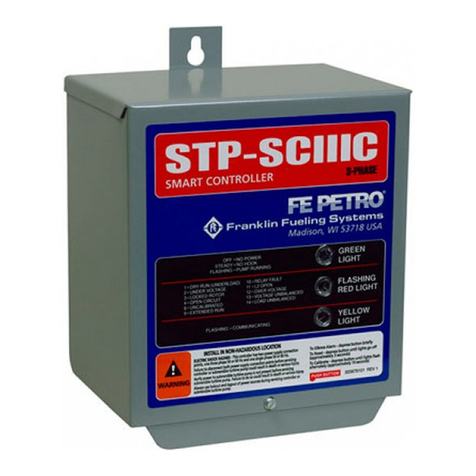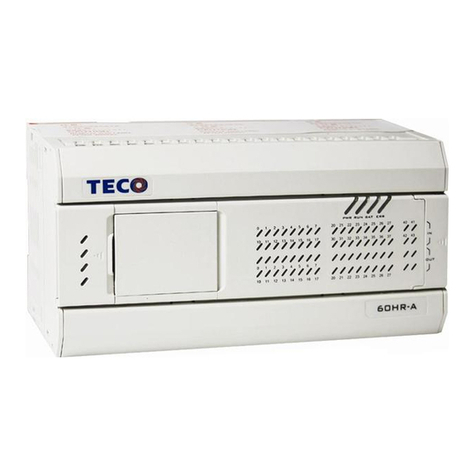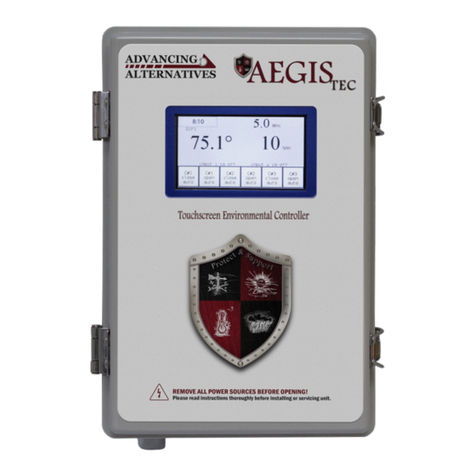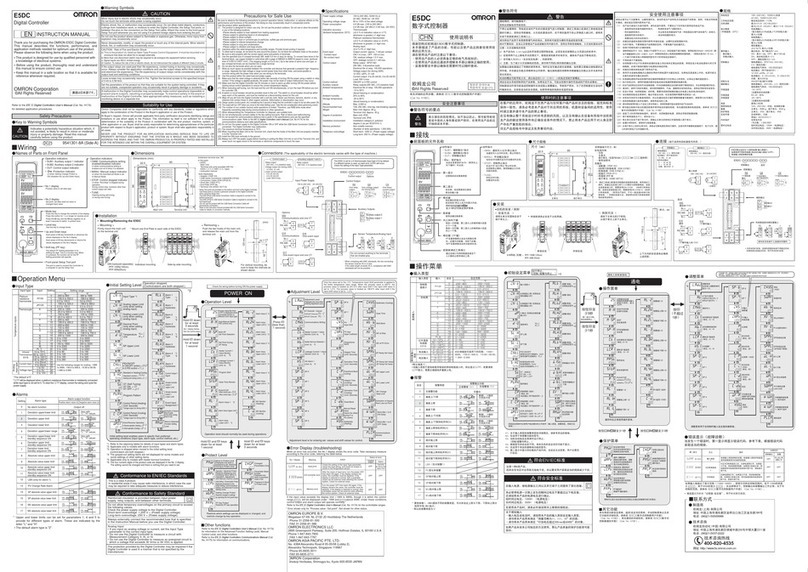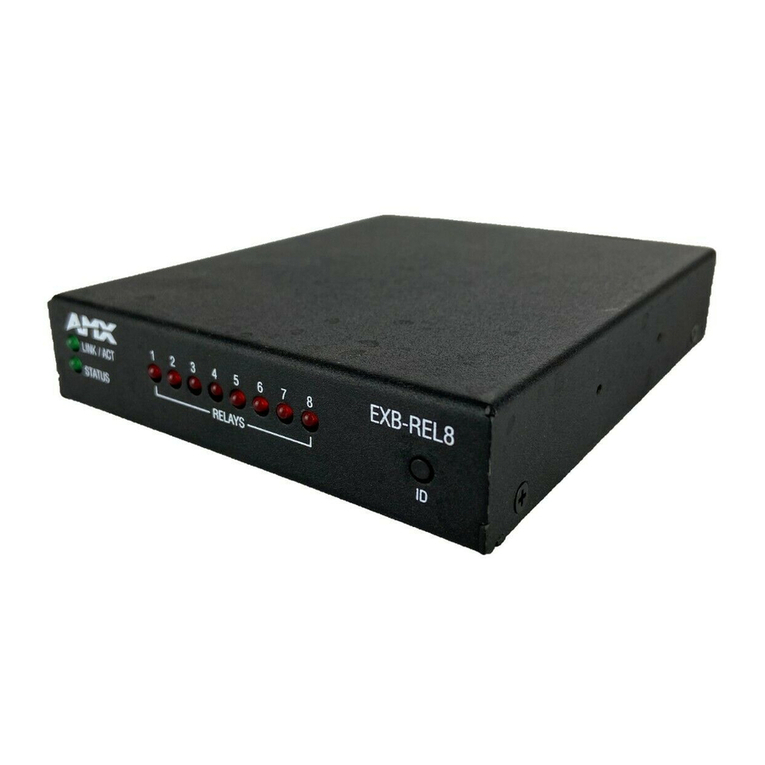nekos KIMO 24V User manual

4420064 – Rev. 2010
KIMO
INSTRUCTION MANUAL
CHAIN ACTUATOR
Force 200N – Maximum stroke 210 mm
Electrical feeding 24V
NEKOS S.r.l. - Via Capitoni, 7/5 - 36064 Colceresa (VI) – ITALY
EN
2
USER INSTRUCTIONS
CAUTION. Carefully observe all the following installation
instructions to ensure personal safety.
The device is not intended for use by persons (including children)
with reduced physical, sensory or mental capabilities, or lacking
experience and knowledge. Do not allow children to play with the
fixed controls and keep any remote-control units out of their reach.
Have installation checks performed periodically by qualified
personnel from a service centre authorised by the manufacturer. Do
not use if repair or adjustment is required.
CAUTION: if the power cable is damaged, it must be replaced by
qualified personnel from a service centre authorised by the
manufacturer.
CAUTION. Disconnect the power supply during cleaning or
maintenance operations. Do not use solvents or jets of water to
wash the appliance; the appliance should not be submerged in
water.
In the event of fault or malfunction, switch off the device at the main
switch. All repairs and adjustments (e.g. setting the stroke) must
only be performed by qualified personnel from a service centre
authorised by the manufacturer.
Always request exclusive use of original spare parts. Failure to
respect this condition could compromise safety and invalidate the
benefits contained in the warranty for the appliance. In the event of
any problems or queries, consult your agent or contact the
manufacturer directly.
The A-weighted sound pressure level is less than 70dB(A).
Carefully preserve these instructions after installation.

INSTALLER
nekos
products have been manufactured in accordance with safety standards and
conforms to the stipulations of current standards in force.
When correctly assembled, installed and used according to the present instructions, they
will not generate any danger
for persons, animals or items.
Symbols used in the manual
DANGER
Contents
1. Security rules
................................
2.
Formulas and recommendations for installation
2.1.
Calculation of opening / closure force
2.2.
Maximum opening based on sash height
3.
Technical operating information
4.
Construction and regulatory references
5. Technical data
................................
6. Id plate and marking data
................................
7. Electric power supply
................................
7.1. Selecting the cross
-
8. Electrical connection
................................
9. Instructions for assembly
................................
9.1.
Preparation for mounting the actuator
9.2.
Recessed mounting
9.3.
Surface mounting on top
windows
................................
10. Programming the actuator
10.1. Opening stroke-
end
10.2. Closure stroke-end
................................
10.3. Operation with BK-
LOCK
11.
Actuator kit with electromechanical lock
11.1.
Electrical connection and operating logic
11.2.
Sound diagnostics in case of anomaly
12.
Checking for correct assembly
13.
Emergency manoeuvres, maintenance or cleaning
14. Troubleshooting
................................
15. Environmental protection
................................
16. Certificate of guarantee
................................
17.
Declaration of incorporation (for a partly completed machine) and EC Declaration of
Conformity
................................
3
INSTALLER
INSTRU
CTIONS
products have been manufactured in accordance with safety standards and
conforms to the stipulations of current standards in force.
When correctly assembled, installed and used according to the present instructions, they
for persons, animals or items.
Symbols used in the manual
This indication draw the attention about potential dangers for safety and
health of peoples and animals.
................................
................................
................................
Formulas and recommendations for installation
................................
Calculation of opening / closure force
................................
................................
Maximum opening based on sash height
................................
Technical operating information
................................
................................
Construction and regulatory references
................................
................................
................................
................................
................................
................................
................................
................................
................................
................................
-
section of the power supply cables
................................
................................
................................
................................
................................
................................
Preparation for mounting the actuator
................................
................................
Recessed mounting
................................
................................
Surface mounting on top
-hung windows
opening outwards or bottom
................................
................................
................................
................................
................................
end
................................
................................
................................
................................
LOCK
electromechanical lock
................................
Actuator kit with electromechanical lock
................................
................................
Electrical connection and operating logic
................................
Sound diagnostics in case of anomaly
................................
Checking for correct assembly
................................
................................
Emergency manoeuvres, maintenance or cleaning
................................
................................
................................
................................
................................
................................
................................
................................
Declaration of incorporation (for a partly completed machine) and EC Declaration of
................................
................................
................................
CTIONS
products have been manufactured in accordance with safety standards and
When correctly assembled, installed and used according to the present instructions, they
This indication draw the attention about potential dangers for safety and
................................
................ 4
................................
............................ 5
................................
.. 5
................................
............................. 5
................................
..................... 6
................................
......... 6
................................
............... 7
................................
.............................. 7
................................
.... 8
................................
........ 8
................................
..... 8
................................
............................... 9
................................
10
................................
.......................... 10
opening outwards or bottom
-hung
................................
.................. 10
................................
........................... 11
................................
........................... 11
................................
............................ 11
................................
.............. 12
................................
....... 12
................................
........................... 12
................................
............................... 13
................................
.................... 13
................................
...................... 13
................................
.......... 14
................................
............................. 14
................................
............................... 14
Declaration of incorporation (for a partly completed machine) and EC Declaration of
................................
.................. 15
1. Security rules
C
AREFULLY OBSERVE ALL
ENSURE PERSONAL SAFE
SAFETY
.
MANDATORY RISK ANALY
The Nekos electrical actuators comply with the Machinery Directive (2006/42/EC),
Standard IEC 60335-2-
103 (Particular requirements for drives for gates, doors and
windows) and other directives and regulations indicated in the attached Declarations of
Incor
poration and CE Conformity (at the end of the manual). According to the Machinery
Directive, actuators are “partly completed machinery” intended for incorporation into doors
and windows. The manufacturer/supplier of the window is required, with exclusive
r
esponsibility, to ensure the compliance of the entire system with the applicable standards
and to issue CE certification. We strongly discourage any use of the actuators other than
that specified and therefore, in any case, the supplier of the complete sys
liability.
For systems installed at a height of less than 2.5 m above floor level or other levels
accessible to users, the manufacturer/supplier of the window must conduct
regarding potential harm (violent blows, crushing, w
use or possible malfunction or accidental breakage of the automated windows, and to
implement suitable
protective measures
recommended by the specified standard:
- controlling th
e actuators via a “deadman’s button” placed near the system and within
the operator’s field of view, to ensure that people are out of the way during operation.
The button must be placed at a height of 1.5 m and operated by key if accessible to
the public; or:
-
use of contact safety systems (also included in the actuators) that ensure a maximum
closing force of 400/150/25 N, measured in accordance with paragraph BB.20.107.2
of IEC 60335-2-103; or:
- use of non-
contact safety systems (lasers, light grids); or:
-
use of fixed safety barriers that prevent access to moving parts.
Automated windows are deemed adequately protected if they:
-
are installed at a height of >2.5 m; or:
- have a leading-
edge opening of <200 mm and a closing speed of <15 mm/s; or:
- are pa
rt of a smoke and heat evacuation system for emergency use only.
In any case, moving parts of windows that could fall below 2.5 m following breakage of a
system component need to be fixed or
falling or collapsing
: e.g. the use of safety arms on bottom
The device is not intended for use by persons (including children) with reduced
physical, sensory or mental capabilities, or lacking experience and knowledge. Do
not allow children to play
out of their reach.
The actuator is destined exclusively for installation indoors. For any special
application we recommend you consult the manufacturer beforehand.
After removing packaging, check f
4
AREFULLY OBSERVE ALL
THE FOLLOWING INSTAL
LATION INSTRUCTIONS
ENSURE PERSONAL SAFE
TY
.
I
MPROPER INSTALLATION
CAN SERIOUSLY ENDANG
MANDATORY RISK ANALY
SIS AND PROTECTION MEASURES
.
The Nekos electrical actuators comply with the Machinery Directive (2006/42/EC),
103 (Particular requirements for drives for gates, doors and
windows) and other directives and regulations indicated in the attached Declarations of
poration and CE Conformity (at the end of the manual). According to the Machinery
Directive, actuators are “partly completed machinery” intended for incorporation into doors
and windows. The manufacturer/supplier of the window is required, with exclusive
esponsibility, to ensure the compliance of the entire system with the applicable standards
and to issue CE certification. We strongly discourage any use of the actuators other than
that specified and therefore, in any case, the supplier of the complete sys
For systems installed at a height of less than 2.5 m above floor level or other levels
accessible to users, the manufacturer/supplier of the window must conduct
regarding potential harm (violent blows, crushing, w
ounds) caused to people by normal
use or possible malfunction or accidental breakage of the automated windows, and to
protective measures
in view of these. Such measures include those
recommended by the specified standard:
e actuators via a “deadman’s button” placed near the system and within
the operator’s field of view, to ensure that people are out of the way during operation.
The button must be placed at a height of 1.5 m and operated by key if accessible to
use of contact safety systems (also included in the actuators) that ensure a maximum
closing force of 400/150/25 N, measured in accordance with paragraph BB.20.107.2
contact safety systems (lasers, light grids); or:
use of fixed safety barriers that prevent access to moving parts.
Automated windows are deemed adequately protected if they:
are installed at a height of >2.5 m; or:
edge opening of <200 mm and a closing speed of <15 mm/s; or:
rt of a smoke and heat evacuation system for emergency use only.
In any case, moving parts of windows that could fall below 2.5 m following breakage of a
system component need to be fixed or
secured in order to prevent them from suddenly
: e.g. the use of safety arms on bottom
-
hung windows.
The device is not intended for use by persons (including children) with reduced
physical, sensory or mental capabilities, or lacking experience and knowledge. Do
not allow children to play
with the fixed controls and keep any remote
The actuator is destined exclusively for installation indoors. For any special
application we recommend you consult the manufacturer beforehand.
After removing packaging, check f
or any damage on the appliance.
LATION INSTRUCTIONS
TO
CAN SERIOUSLY ENDANG
ER
The Nekos electrical actuators comply with the Machinery Directive (2006/42/EC),
103 (Particular requirements for drives for gates, doors and
windows) and other directives and regulations indicated in the attached Declarations of
poration and CE Conformity (at the end of the manual). According to the Machinery
Directive, actuators are “partly completed machinery” intended for incorporation into doors
and windows. The manufacturer/supplier of the window is required, with exclusive
esponsibility, to ensure the compliance of the entire system with the applicable standards
and to issue CE certification. We strongly discourage any use of the actuators other than
that specified and therefore, in any case, the supplier of the complete sys
tem retains full
For systems installed at a height of less than 2.5 m above floor level or other levels
accessible to users, the manufacturer/supplier of the window must conduct
risk analysis
ounds) caused to people by normal
use or possible malfunction or accidental breakage of the automated windows, and to
in view of these. Such measures include those
e actuators via a “deadman’s button” placed near the system and within
the operator’s field of view, to ensure that people are out of the way during operation.
The button must be placed at a height of 1.5 m and operated by key if accessible to
use of contact safety systems (also included in the actuators) that ensure a maximum
closing force of 400/150/25 N, measured in accordance with paragraph BB.20.107.2
use of fixed safety barriers that prevent access to moving parts.
edge opening of <200 mm and a closing speed of <15 mm/s; or:
rt of a smoke and heat evacuation system for emergency use only.
In any case, moving parts of windows that could fall below 2.5 m following breakage of a
secured in order to prevent them from suddenly
hung windows.
The device is not intended for use by persons (including children) with reduced
physical, sensory or mental capabilities, or lacking experience and knowledge. Do
with the fixed controls and keep any remote
-control units
The actuator is destined exclusively for installation indoors. For any special
application we recommend you consult the manufacturer beforehand.
or any damage on the appliance.

Always request exclusive use of original spare parts. Failure to respect this
condition could compromise safety and invalidate the benefits contained in the
warranty for the appliance.
In the event of any problems or querie
manufacturer directly.
2.
Formulas and recommendations for installation
2.1.
Calculation of opening / closure force
Using the formulas on this page, approximate calculations can be made for the force
required to open or close the window considering all the factors that determine the
calculation.
Symbols used for the calculation
F (Kg) = Force for opening or closing
C (cm) = Opening stroke (actuator stroke)
For horizontal light domes or
skylights
F = 0,54 x P
(Eventual weight of snow or wind on the
cupola should be
calculated separately)
2.2.
Maximum opening based on sash
The selection of the actuator stroke should be made based on the height of the sash
and its application. As a general rule, never select a stroke greater than the height of
the window frame; select the stroke directly below it.
W
ARNING
.
The actuator is designed to be recess mounted on the window frame.
Check that during the stroke the chain does not touch the profile of the sash, there
are no obstacles to opening the window and the chain does not push against the
window frame.
5
Always request exclusive use of original spare parts. Failure to respect this
condition could compromise safety and invalidate the benefits contained in the
warranty for the appliance.
In the event of any problems or querie
s, consult your agent or contact the
manufacturer directly.
Formulas and recommendations for installation
Calculation of opening / closure force
Using the formulas on this page, approximate calculations can be made for the force
required to open or close the window considering all the factors that determine the
Symbols used for the calculation
F (Kg) = Force for opening or closing
P (Kg) =
Weight of the window (mobile sash only)
C (cm) = Opening stroke (actuator stroke)
H (cm) = Height of the mobile sash
For horizontal light domes or
(Eventual weight of snow or wind on the
calculated separately)
.
For vertical windows
TOP HUNG WINDOWS
,
OUTWARD OPENING
BOTTOM HUNG WINDOWS
F = 0,54 x P x C : H
(Eventual load of favourable or unfavourable wind
on the sash should be calculated separately).
Maximum opening based on sash
height
The selection of the actuator stroke should be made based on the height of the sash
and its application. As a general rule, never select a stroke greater than the height of
the window frame; select the stroke directly below it.
The actuator is designed to be recess mounted on the window frame.
Check that during the stroke the chain does not touch the profile of the sash, there
are no obstacles to opening the window and the chain does not push against the
Always request exclusive use of original spare parts. Failure to respect this
condition could compromise safety and invalidate the benefits contained in the
s, consult your agent or contact the
Using the formulas on this page, approximate calculations can be made for the force
required to open or close the window considering all the factors that determine the
Weight of the window (mobile sash only)
H (cm) = Height of the mobile sash
For vertical windows
OUTWARD OPENING
(A)
BOTTOM HUNG WINDOWS
(B)
F = 0,54 x P x C : H
(Eventual load of favourable or unfavourable wind
on the sash should be calculated separately).
The selection of the actuator stroke should be made based on the height of the sash
and its application. As a general rule, never select a stroke greater than the height of
The actuator is designed to be recess mounted on the window frame.
Check that during the stroke the chain does not touch the profile of the sash, there
are no obstacles to opening the window and the chain does not push against the
3. Technical
operating information
The chain actuator is used to open and close the window by means of a three
steel chain (Nekos Patent)
. The movement is achieved with
SELV
) electricity that powers a gear motor controlled by a functional el
device. Window opening can be programmed, and the device allows excursion of
the chain to strokes of 70, 125, 170 and 210 mm. For the return stroke, i.e., the
closing of the window, the stroke
automa
tically calculates the required power absorption to produce the movement of
the window, and therefore no settings are required. The actuator can also be
installed without the immediate availability of electricity for window movement; in this
case the actua
tor will simply hold the window closed after assembly. The structure of
the actuator is entirely metal and it is used for room ventilation. The coupling
between the actuator and support brackets fixed to the window frame is a quick
connect coupling that al
lows the actuator to rotate in order to adapt to the stroke of
the chain, even on windows with reduced height. The brackets are fixed to the frame
during actuator assembly with just two screws. Combined with the
product and perimeter fittings, it constitutes the security lock that keeps the window
closed tight and guarantees a high thermal K.
4.
Construction and regulatory references
INTENDED USE
The KIMO chain actuator is designed and built to open
and close top-
hung windows opening outwards, bottom
up-and-
over roof windows. Its use is specifically intended for ventilation, air
conditioning of rooms and, if used in combination with the BK
lock, also as a building security system; it is
actuator not be used for any other purpose unless approved
manufacturer beforehand, with the supplier of the entire system in any case
retaining sole liability.
The actuator is manufactured in accordance with the EC Directives and
Regulations listed in the attached Declaration of Incorporation and
Conformity .
Electrical connections must conform to regulations in force for the design
an
d set up of electrical equipment.
To ensure efficient separation from the grid, an approved type of bipolar
“dead-
man” switch should be used. An omnipolar general power switch with
minimum distance of 3 mm between contacts should be installed upstream of
the control line.
The actuator is individually packaged in a cardboard container and each pack contains:
24V
electrical actuator complete of connector for feeding cable wiring.
2 support brackets
2 half-
brackets for attach to the frame, complete with
Instruction manual
6
operating information
The chain actuator is used to open and close the window by means of a three
. The movement is achieved with
very
) electricity that powers a gear motor controlled by a functional el
device. Window opening can be programmed, and the device allows excursion of
the chain to strokes of 70, 125, 170 and 210 mm. For the return stroke, i.e., the
closing of the window, the stroke
-
end is determined by an electronic process that
tically calculates the required power absorption to produce the movement of
the window, and therefore no settings are required. The actuator can also be
installed without the immediate availability of electricity for window movement; in this
tor will simply hold the window closed after assembly. The structure of
the actuator is entirely metal and it is used for room ventilation. The coupling
between the actuator and support brackets fixed to the window frame is a quick
lows the actuator to rotate in order to adapt to the stroke of
the chain, even on windows with reduced height. The brackets are fixed to the frame
during actuator assembly with just two screws. Combined with the
product and perimeter fittings, it constitutes the security lock that keeps the window
closed tight and guarantees a high thermal K.
Construction and regulatory references
The KIMO chain actuator is designed and built to open
hung windows opening outwards, bottom
over roof windows. Its use is specifically intended for ventilation, air
conditioning of rooms and, if used in combination with the BK
lock, also as a building security system; it is
highly recommended that the
actuator not be used for any other purpose unless approved
manufacturer beforehand, with the supplier of the entire system in any case
retaining sole liability.
The actuator is manufactured in accordance with the EC Directives and
Regulations listed in the attached Declaration of Incorporation and
Electrical connections must conform to regulations in force for the design
d set up of electrical equipment.
To ensure efficient separation from the grid, an approved type of bipolar
man” switch should be used. An omnipolar general power switch with
minimum distance of 3 mm between contacts should be installed upstream of
The actuator is individually packaged in a cardboard container and each pack contains:
electrical actuator complete of connector for feeding cable wiring.
brackets for attach to the frame, complete with
pin
The chain actuator is used to open and close the window by means of a three
-link
very
low-voltage (24V
) electricity that powers a gear motor controlled by a functional el
ectronic
device. Window opening can be programmed, and the device allows excursion of
the chain to strokes of 70, 125, 170 and 210 mm. For the return stroke, i.e., the
end is determined by an electronic process that
tically calculates the required power absorption to produce the movement of
the window, and therefore no settings are required. The actuator can also be
installed without the immediate availability of electricity for window movement; in this
tor will simply hold the window closed after assembly. The structure of
the actuator is entirely metal and it is used for room ventilation. The coupling
between the actuator and support brackets fixed to the window frame is a quick
-
lows the actuator to rotate in order to adapt to the stroke of
the chain, even on windows with reduced height. The brackets are fixed to the frame
during actuator assembly with just two screws. Combined with the
BK-LOCK
product and perimeter fittings, it constitutes the security lock that keeps the window
The KIMO chain actuator is designed and built to open
hung windows opening outwards, bottom
-hung windows or
over roof windows. Its use is specifically intended for ventilation, air
conditioning of rooms and, if used in combination with the BK
-LOCK window
highly recommended that the
actuator not be used for any other purpose unless approved
by the
manufacturer beforehand, with the supplier of the entire system in any case
The actuator is manufactured in accordance with the EC Directives and
Regulations listed in the attached Declaration of Incorporation and
Electrical connections must conform to regulations in force for the design
To ensure efficient separation from the grid, an approved type of bipolar
man” switch should be used. An omnipolar general power switch with
minimum distance of 3 mm between contacts should be installed upstream of
The actuator is individually packaged in a cardboard container and each pack contains:
electrical actuator complete of connector for feeding cable wiring.

7
5. Technical data
Model
K
IMO
24V
Force exerted by thrust (F
N
) 100N
Force exerted by traction (F
N
) 200N
Strokes (S
V
) 70, 125, 170, 210 mm
Power supply voltage (U
N
) 24 V SELV
Rated absorbed current (I
N
) 0,36A
Power absorbed at nominal load (P
N
) 8,6W
Electrical insulation Class III
No load speed 5,5 mm/s
Duration of no load stroke (210 mm) 38 s
Type of service (D
R
) 5 cycles
Operating temperature - 5 + 65 ºC
Protection index for electrical devices IP32
Adjustment of connection to window frame Automatic definition of position
Parallel powering of two or more motors YES (max 20 actuators)
Operation with BK-LOCK electromechanical
lock
Yes
Synchronised function Not foreseen
Holding nominal force (it can vary according to
the chosen brackets)
1.700N
Stroke-end at opening Electronic by dip-switch
Stroke-end at closing At absorption of power
Chain exit Central
Length of power cable 2 m
Dimensions 29x29x310 mm
Weight 0,720 Kg
The data indicated in these figures is not binding and is subject to variation without notification.
6. Id plate and marking data
The KIMO actuators have CE marking and comply with the Standards listed in the
Declaration of Conformity. They also come with a Declaration of Incorporation, due
to their classification by the Machinery Directive as “partly completed machines”.
Both declarations are included in the final pages of this manual.
The plate data is displayed on an adhesive label placed on the outside of the casing,
which must remain intact and visible.
The main information it displays includes: manufacturer's address, product name -
model number, technical characteristics, production date and serial number.
In the event of a complaint, please indicate the serial number (SN) displayed on the
label.
An explanation of the symbols used on the label to abbreviate the technical
characteristics is given in the table in the chapter on “TECHNICAL DATA”.
8
7. Electric power supply
The KIMO actuator is powered with a voltage of 24V SELV. The power supply
cable has three conductors: the first conductor RED “1” that should be connected to
the + (positive) CLOSES the window; the second conductor BLACK “2” that should be
connected to the + (positive) OPENS the window; the third conductor GREEN “3” is
the conductor used for the BK-LOCK control communication signal.
The 24V low-voltage actuators can be powered using a station with emergency
batteries or a security power supply unit with an output voltage of 24V (min. 20.4V,
max. 28,8V), that is to say, sized based on the number of actuators connected.
7.1. Selecting the cross-section of the power supply cables
It is necessary to check the cross-section of the cable, which should be calculated
based on the length of the cable itself. The table below specifies the maximum length
of the cables for connection of a motor.
CABLE SECTION
Actuator fed at
24V
0.50 mmq ~40 m
0.75 mmq ~60 m
1.00 mmq ~80 m
1.50 mmq ~120 m
2.50 mmq ~200 m
4.00 mmq ~320 m
6.00 mmq ~480m
8. Electrical connection
The machines are equipped with a power supply cable constructed in compliance
with safety standards and restrictions on radio-frequency interference.
The power supply cable - with conductors having a cross-section of 0.5 mm² - is 2
meters long with different colored conductors, as follows
1 – RED-coloured conductor;
2 – BLACK-coloured conductor;
3 – GREEN-coloured conductor:
For harness, please follow this diagram:

9
-+
24V
3
1
2
1 2 3
24V
Note: the first conductor RED “1” that should be connected to the + (positive) CLOSES
the window; the second conductor BLACK “2” that should be connected to the +
(positive) OPENS the window; the third conductor GREEN “3” is the conductor used for
the BK-LOCK control communication signal.
9. Instructions for assembly
These indications are for specialised technical personnel and basic work and
safety techniques are not indicated.
All preparatory, assembly and electrical connection operations must be performed
by specialised technical personnel to guarantee optimal function and service of the
actuator. Check that the following fundamental conditions have been met:
Before installing the actuator, check that the moving parts of the window on
which it is to be installed are in perfect working condition and that they
open and close properly and are well balanced (where applicable).
Actuator specifications must be sufficient for movement of the window
without encountering any obstacle. The limits indicated in the technical data
table must not be superseded (page 7) and the most appropriate stroke
should be selected. Calculations should be checked using the formula
indicated on page 5.
Attention. Check that the electrical power supply corresponds to that
indicated on the TECHNICAL DATA label on the machine.
Ensure that the actuator has not been damaged during transport, first
visually and then by powering in both directions.
Check that the width of the inside of the window (where the actuator is to
be assembled) is over 360 mm, otherwise the actuator should not be
installed.
Check that once the actuator has been installed, chain completely in, the
window is perfectly closed. If this is not the case the actuator will not
function correctly as the window will not close correctly.
10
9.1. Preparation for mounting the actuator
Before beginning to mount the actuator, depending on the type of application, the
window frame must be prepared by carrying out the following operations.
9.2. Recessed mounting
For recessed mounting, the window frame must be prepared by milling and making
two holes as indicated in the diagram below. The depth of the milling must be at
least 30 mm.
Then make two Ø4.5 holes on the sash for the attachment bracket. The
measurements are specified in the diagram below.
9.3. Surface mounting on top-hung windows opening outwards or
bottom-hung windows
The actuator can also be surface mounted on top-hung windows opening outwards or
dormer windows and on bottom-hung windows, however for these specific applications
special support brackets are required for the actuator which must be supplied
separately.
The two half-brackets attaching the actuator to the sash, however, are the same
standard brackets supplied with the actuator and included in the package.
Warning. In order to prevent unpleasant mishaps with the machine and
possible safety hazards, carefully choose the length of the clamping screws
in order to avoid damaging the power supply cables during the mounting
procedure.
In order to carry out a cost-effective and precise up-to-standard work, it is best if you
prepare the following complementary material: small parts, equipment and tools.
Fastening on metal window frames: M4 threaded inserts (2 pieces for recessed
mounting and 4 pieces for surface mounting), M4x12 flat head metric screws (2
pieces (4 pieces for surface mounting)).

11
Fastening on wooden window frames: Ø4 self-threading wood screws (2 pieces
for recessed mounting and 4 pieces for surface mounting), with an appropriate
length for the type of window frame.
Fastening on PVC window frames: Ø3.9x13 self-threading metal screws (2
pieces for recessed mounting and 4 pieces for surface mounting), with an
appropriate length for the type of window frame.
Equipment and tools: tape-measure, pencil, drill/electric screwdriver, set of drill
bits for metal, insert for screwing in, electrician's scissors, screwdrivers.
10. Programming the actuator
10.1. Opening stroke-end
The opening stroke-end of the actuator can be adjusted by selecting the dip-
switches located inside the actuator underneath the black rubber plug (T) (see fig.
below), near the label that indicates the state of the dip-switches.
The setting can be made very easily by selecting the dip-switches as specified in the
table below.
STROKE
(mm)
DIP-SWITCH WITHOUT
BK-LOCK
WITH
BK-LOCK
1 2 3 4 4
70 ON OFF OFF
OFF ON
125 OFF ON OFF
170 OFF OFF ON
210 OFF OFF OFF
The actuator is factory-set with the longest stroke (210 mm).
10.2. Closure stroke-end
The stroke-end at closure is automatic and cannot be programmed.
The actuator stops when the charge is absorbed when the window is completely
closed and the weather stripping is completely depressed.
After each closure or intervention of electronic protection devices, the chain will
move about 1 mm in the opposite direction to give correct compression to the seals
and release the mechanical parts.
10.3. Operation with
The actuator can also work in combination with the
lock; this operating mode can be selected using dip
set on ON without the lock being connected, the actuator will not move.
11.
Actuator kit with electromechanical lock
Warning
. Always comply with the corr
the two machines; an incorrect connection may damage the machines and
create a hazardous situation.
11.1.
Electrical connection and operating logic
In order for the two machines to work in combination with one another, the
connection must be made by connecting the wires according to the following
diagram.
-
In the BK-LOCK
electromechanical lock select, using dip
stroke and set, using dip-
switch No. 2, the “
instructions in the BK-
LOCK
Power the two machines with a voltage of 24V
inverting the polarity to open and close the system.
Powering Black wire
with +24V
effects:
the lock moves in the opening direction;
the lock arrives at stroke
the chain actuator begins opening, opening the movable sash;
the KIMO chain actuator reaches stroke
Powering Red wi
re with +24V
effects:
the chain actuator moves in the closing direction;
the actuator reaches stroke
12
Operation with
BK-LOCK
electromechanical lock
The actuator can also work in combination with the
BK-
LOCK
lock; this operating mode can be selected using dip
-
switch No.4. If the dip
set on ON without the lock being connected, the actuator will not move.
Actuator kit with electromechanical lock
. Always comply with the corr
ect electrical connections between
the two machines; an incorrect connection may damage the machines and
create a hazardous situation.
Electrical connection and operating logic
In order for the two machines to work in combination with one another, the
connection must be made by connecting the wires according to the following
-+
24V
3
1
2
1 2 3
24V
electromechanical lock select, using dip
-
switch No. 1, the desired
switch No. 2, the “
OPER
ATION WITH ACTUATOR
LOCK
manual also).
Power the two machines with a voltage of 24V
(Red
wire and
inverting the polarity to open and close the system.
with +24V
and Red wire with -24V
produces the following
the lock moves in the opening direction;
the lock arrives at stroke
-end, stop;
the chain actuator begins opening, opening the movable sash;
the KIMO chain actuator reaches stroke
-end.
re with +24V
and Black wire with -24V
produces the following
the chain actuator moves in the closing direction;
the actuator reaches stroke
-
end and stops with a short relax;
electromechanical lock
LOCK
electromechanical
switch No.4. If the dip
-switch is
set on ON without the lock being connected, the actuator will not move.
ect electrical connections between
the two machines; an incorrect connection may damage the machines and
In order for the two machines to work in combination with one another, the
required
connection must be made by connecting the wires according to the following
switch No. 1, the desired
ATION WITH ACTUATOR
” mode (see
wire and
Black wire),
produces the following
the chain actuator begins opening, opening the movable sash;
produces the following
end and stops with a short relax;

the lock moves in the closing direction;
the lock arrives at stroke
Important note
. If, during the closing movement, the chain actuator stops
suddenly due to an overload or mechanical sticking, this state is
interpreted as a "closing
closure, even if the sash is not effectively closed.
11.2.
Sound diagnostics in case of anomaly
1 Beep
The lock is set in "with actuator" mode but does not receive any
commands from the actuator.
-
The lock does not move because it didn't receive the command.
-
Check the contact of wire "3" of the lock and that
actuator is on ON.
4 Beeps
The actuator (or actuators) are in error.
-
The lock is ready for the command but the connected actuators are in error.
-
Check the diagnostics of the actuators connected to the electromechanical
lock.
12. Che
cking for correct assembly
Check that the window is perfectly closed at corners and that there are no
obstacles caused by incorrect positioning during assembly.
Check that when the window frame is closed the chain terminal is at least a few
millimetres
away from the actuator body. This will ensure the window is properly
closed and seals are correctly compressed. In the event that this should not be
the case there is no guarantee that the window is closed correctly.
Check that hinges and support brackets
fixed against the window frame with screws fixed correctly into position.
Check that the window reaches the desired position according to the stroke
selected.
13.
Emergency manoeuvres, maintenance or cleaning
In the ev
ent that the window frame should require manual opening due to power
failure or problem with the mechanism or for normal maintenance or external cleaning
of the window frame, in built
-
1. Unscrew the tw
o screws that fix the sash to the attachment bracket.
2.
Take care during this operation since the bracket, which is in two pieces after
removing the screws, may fall as it is no longer secured.
3.
Manually open the window frame.
13
the lock moves in the closing direction;
the lock arrives at stroke
-end.
. If, during the closing movement, the chain actuator stops
suddenly due to an overload or mechanical sticking, this state is
interpreted as a "closing
stroke-end
" and thus the lock motor performs a
closure, even if the sash is not effectively closed.
Sound diagnostics in case of anomaly
The lock is set in "with actuator" mode but does not receive any
commands from the actuator.
The lock does not move because it didn't receive the command.
Check the contact of wire "3" of the lock and that
dip
The actuator (or actuators) are in error.
The lock is ready for the command but the connected actuators are in error.
Check the diagnostics of the actuators connected to the electromechanical
cking for correct assembly
Check that the window is perfectly closed at corners and that there are no
obstacles caused by incorrect positioning during assembly.
Check that when the window frame is closed the chain terminal is at least a few
away from the actuator body. This will ensure the window is properly
closed and seals are correctly compressed. In the event that this should not be
the case there is no guarantee that the window is closed correctly.
Check that hinges and support brackets
are aligned to each other and tightly
fixed against the window frame with screws fixed correctly into position.
Check that the window reaches the desired position according to the stroke
Emergency manoeuvres, maintenance or cleaning
ent that the window frame should require manual opening due to power
failure or problem with the mechanism or for normal maintenance or external cleaning
-
in actuators it’s necessary to perform these operations:
o screws that fix the sash to the attachment bracket.
Take care during this operation since the bracket, which is in two pieces after
removing the screws, may fall as it is no longer secured.
Manually open the window frame.
. If, during the closing movement, the chain actuator stops
suddenly due to an overload or mechanical sticking, this state is
" and thus the lock motor performs a
The lock is set in "with actuator" mode but does not receive any
The lock does not move because it didn't receive the command.
dip
-switch No. 2 of the
The lock is ready for the command but the connected actuators are in error.
Check the diagnostics of the actuators connected to the electromechanical
Check that the window is perfectly closed at corners and that there are no
Check that when the window frame is closed the chain terminal is at least a few
away from the actuator body. This will ensure the window is properly
closed and seals are correctly compressed. In the event that this should not be
the case there is no guarantee that the window is closed correctly.
are aligned to each other and tightly
fixed against the window frame with screws fixed correctly into position.
Check that the window reaches the desired position according to the stroke
-end
Emergency manoeuvres, maintenance or cleaning
ent that the window frame should require manual opening due to power
failure or problem with the mechanism or for normal maintenance or external cleaning
in actuators it’s necessary to perform these operations:
o screws that fix the sash to the attachment bracket.
Take care during this operation since the bracket, which is in two pieces after
A
TTENTION
:
DANGER
held in position by the chain.
4.
After maintenance and/or cleaning repeat points 1 and 2 in reverse order.
14. Troubleshooting
Possible causes of malfunction during installation or use.
Problem
Actuator does not work
15.
ENVIRONMENTAL PROTECTION
All materials used in the manufacture of this appliance are recyclable.
We recommend that the device itself, and any accessories, packaging, etc. be sent
to a centre for ecological recycling as established from laws in force on recycling.
The device is ma
inly made from the following materials: aluminium, zinc, iron, plastic
of various type, cuprum. Dispose materials in conformity with local regulations about
removal.
16.
CERTIFICATE OF GUARANTEE
The manufacturer will guarantee good function of the appliance. T
shall undertake to replace defective parts due to poor quality materials or
manufacturing defects in accordance with article 1490 of the Civil Code.
The guarantee covers products and individual parts for
purchase. The latter is valid as long as the purchaser possesses proof of purchase
and completion of all agreed conditions of payment.
Guarantee of good function of appliances agreed by the manufacturer implies that
the latter undertakes
to repair or replace free of charge and in the shortest period
possible any parts that break while under warranty.
The purchaser is not entitled to any reimbursement for eventual direct or indirect
damage or other expenses incurred. Attempt to repair by pe
the manufacture shall render the warranty null and invalid.
The warranty does not cover fragile parts or parts subject to natural wear and tear or
corrosion, overload, however temporary etc. The manufacturer will accept no
responsi
bility for eventual damage incurred by erroneous assembly, manoeuvre or
insertion, excessive stress or inexpert use.
Repairs performed under guarantee are always "
Respective transport expenses (out/back) are the responsibil
14
DANGER
– the window
could fall as the sash is no longer
held in position by the chain.
After maintenance and/or cleaning repeat points 1 and 2 in reverse order.
Possible causes of malfunction during installation or use.
Possible cause
No electricity at feeder
Check status of circuit
breaker or safety switch
Cable not connected
or wire disconnected.
Check electrical
connections at reduction
motor
ENVIRONMENTAL PROTECTION
All materials used in the manufacture of this appliance are recyclable.
We recommend that the device itself, and any accessories, packaging, etc. be sent
to a centre for ecological recycling as established from laws in force on recycling.
inly made from the following materials: aluminium, zinc, iron, plastic
of various type, cuprum. Dispose materials in conformity with local regulations about
CERTIFICATE OF GUARANTEE
The manufacturer will guarantee good function of the appliance. T
shall undertake to replace defective parts due to poor quality materials or
manufacturing defects in accordance with article 1490 of the Civil Code.
The guarantee covers products and individual parts for
2 years
purchase. The latter is valid as long as the purchaser possesses proof of purchase
and completion of all agreed conditions of payment.
Guarantee of good function of appliances agreed by the manufacturer implies that
to repair or replace free of charge and in the shortest period
possible any parts that break while under warranty.
The purchaser is not entitled to any reimbursement for eventual direct or indirect
damage or other expenses incurred. Attempt to repair by pe
rsonnel unauthorised by
the manufacture shall render the warranty null and invalid.
The warranty does not cover fragile parts or parts subject to natural wear and tear or
corrosion, overload, however temporary etc. The manufacturer will accept no
bility for eventual damage incurred by erroneous assembly, manoeuvre or
insertion, excessive stress or inexpert use.
Repairs performed under guarantee are always "
ex factory of the manufacturer
Respective transport expenses (out/back) are the responsibil
ity of the purchaser.
could fall as the sash is no longer
After maintenance and/or cleaning repeat points 1 and 2 in reverse order.
Solution
Check status of circuit
breaker or safety switch
Check electrical
connections at reduction
All materials used in the manufacture of this appliance are recyclable.
We recommend that the device itself, and any accessories, packaging, etc. be sent
to a centre for ecological recycling as established from laws in force on recycling.
inly made from the following materials: aluminium, zinc, iron, plastic
of various type, cuprum. Dispose materials in conformity with local regulations about
The manufacturer will guarantee good function of the appliance. T
he manufacturer
shall undertake to replace defective parts due to poor quality materials or
manufacturing defects in accordance with article 1490 of the Civil Code.
2 years
from the date of
purchase. The latter is valid as long as the purchaser possesses proof of purchase
Guarantee of good function of appliances agreed by the manufacturer implies that
to repair or replace free of charge and in the shortest period
The purchaser is not entitled to any reimbursement for eventual direct or indirect
rsonnel unauthorised by
The warranty does not cover fragile parts or parts subject to natural wear and tear or
corrosion, overload, however temporary etc. The manufacturer will accept no
bility for eventual damage incurred by erroneous assembly, manoeuvre or
ex factory of the manufacturer
".
ity of the purchaser.

15
17. Dichiarazione di Incorporazione (per una quasi macchina) e Dichiarazione CE di
Conformità / Declaration of incorporation (for a partly completed machine) and EC
Declaration of Conformity.
Con la presente il / Hereby the
Costruttore:
Manufacturer:
Nekos Srl
Via Capitoni 7/5- 36064 Colceresa (Vicenza) - Italy
Tel +39 0424 411011 – Email info@nekos.it
dichiara sotto la propria responsabilità che i seguenti prodotti:
declare under its own responsibility that the following products:
Descrizione prodotto :
Product Designation:
Attuatore a catena per finestre
Window chain drive
Modello:
Type :
230 V : KATO 253
-
KATO
-
KATO 305
KATO SYNCRO3 - KATO 305 SYNCRO3
INKA 356 - INKA 356 SYNCRO3
24 V : KATO 253 - KATO - KIMO - KATO 305
KATO SYNCRO3 - KATO 305 SYNCRO3
INKA 356 - INKA 356 SYNCRO3
Anno di costruzione dal / Year of manufacturing from: 2017
Soddisfano gli applicabili requisiti essenziali della
Direttiva Macchine 2006/42/EC, Allegato I
Fulfil the essential requirements of the Machinery Directive 2006/42/EC, Annex I, Art. 1.1.2, 1.1.3, 1.1.5,
1.2.1,1.2.3, 1.2.6; 1.3.2, 1.3.4, 1.3.9, 1.5.1, 1.5.2, 1.5.6, 1.5.7, 1.5.8, 1.5.9, 1.5.10, 1.5.11, 1.7.1, 1.7.1.1, 1.7.3,
1.7.4.2, 1.7.4.3
La documentazione tecnica pertinente è compilata secondo l’Allegato VII, sezione B
The relevant technical documentation is compiled in accordance with Annex VII, Part B
La persona autorizzata a costituire la documentazione tecnica pertinente è:
The person authorised to compile the relevant technical documentation is: ing. Matteo Stefani – Nekos S.r.l.
Su richiesta adeguatamente motivata delle autorità nazionali, la documentazione tecnica dei citati prodotti sarà resa
disponibile, via e-mail, entro un tempo compatibile con la sua importanza.
In response to a reasoned request by the national authorities, we will provide, via e-mail, the relevant information on
the product listed above within an adequate period proportional to its importance.
Inoltre i succitati prodotti sono conformi alle disposizioni pertinenti delle seguenti Direttive:
Furthermore the products listed above complies with the provisions of followings Directives :
2014/30/EU Direttiva Compatibilità Elettromagnetica / ElectroMagnetic Compatibility Directive (EMCD)
2014/35/EU Direttiva Bassa Tensione / Low Voltage Directive (LVD)
2011/65/EU Direttiva sulla restrizione dell’uso di determinate sostanze pericolose nelle apparecchiature
elettriche ed elettroniche (Direttiva RoHS) / Restriction of the use of certain hazardous substances Directive
(RoHS Directive)
2015/863/EU Direttiva Delegata recante modifica dell’allegato II della Direttiva 2011/65/EU del Parlamento Europeo e
del Consiglio per quanto riguarda l’elenco delle sostanze con restrizioni d’uso. / Delegated Directive amending Annex II
of Directive 2011/65/EU of the European Parliament and of the Council regarding the list of substances with usage
restrictions
e delle seguenti norme armonizzate e/o specifiche tecniche:
and of the following harmonised standards and/or technical specifications:
EN 60335-2-103; EN 61000-6-3:2007 + A1:2011 + AC:2012; EN IEC 61000-6-2:2019;
EN 60335-1:2012 + AC:2014 + A11:2014; EN 50581:2012
La messa in moto di una macchina completa che includa la quasi macchina sopra menzionata, da noi fornita, non è
permessa finché non sia accertato che l’installazione sia stata fatta secondo le specifiche e le indicazioni di
installazione contenute nel “Manuale d’istruzioni” fornito con la quasi-macchina e che sia stata espletata e
documentata, in apposito protocollo, una procedura di accettazione da parte di un tecnico abilitato.
Commissioning of the complete machinery including the above mentioned drives delivered by us is not allowed until it
is ascertained that the installation of the complete machinery was performed in accordance with the specifications and
the operating and installation advice given in our Mounting Instructions, and that the acceptance procedure was duly
carried out and documented in an acceptance protocol by a specialist.
Questa dichiarazione è fatta dal costruttore / This is declared by the manufacturer:
NEKOS SRL - Via Capitoni 7/5 - 36064 Colceresa (Vicenza) - Italy
Rappresentato da / Represented by : Giuliano Galliazzo – A.D. Presidente / President CEO
Luogo e data / Place and date : Colceresa 04/03/2020 Firma / Valid signature
16
NEKOS S.r.l. - Via Capitoni, 7/5
36064 Colceresa (VI) – ITALY
+39 0424 411011 – +39 0424 411013
www.nekos.it info@nekos.it
This manual suits for next models
1
Table of contents
Other nekos Controllers manuals
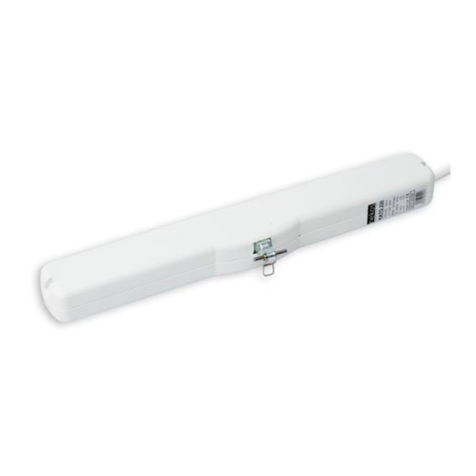
nekos
nekos KATO RADIO 230V User manual
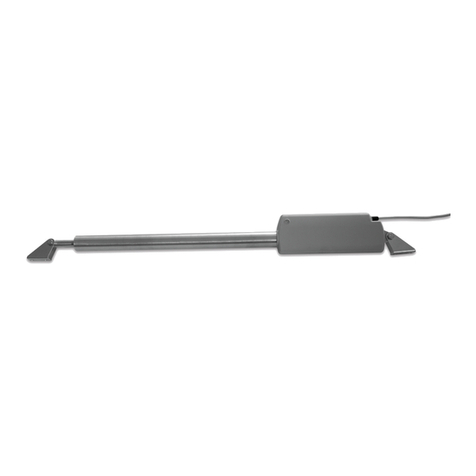
nekos
nekos ROCK 230 V User manual
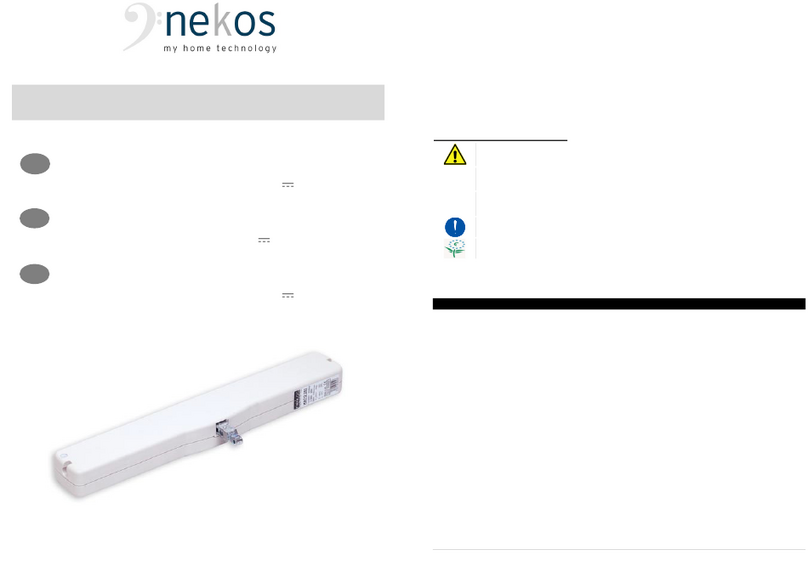
nekos
nekos KATO 253 User manual
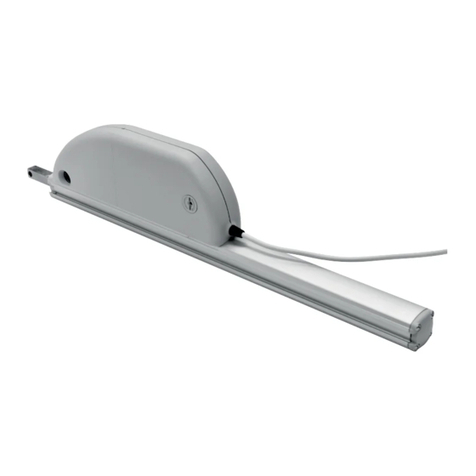
nekos
nekos SKYRO 650 User manual

nekos
nekos INKA 356 Series User manual

nekos
nekos SKY 450 User manual
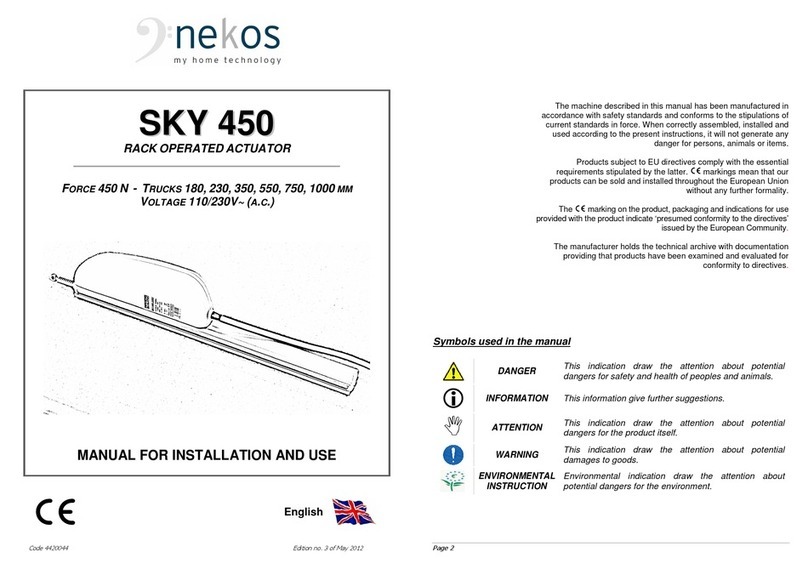
nekos
nekos SKY 450 Quick start guide
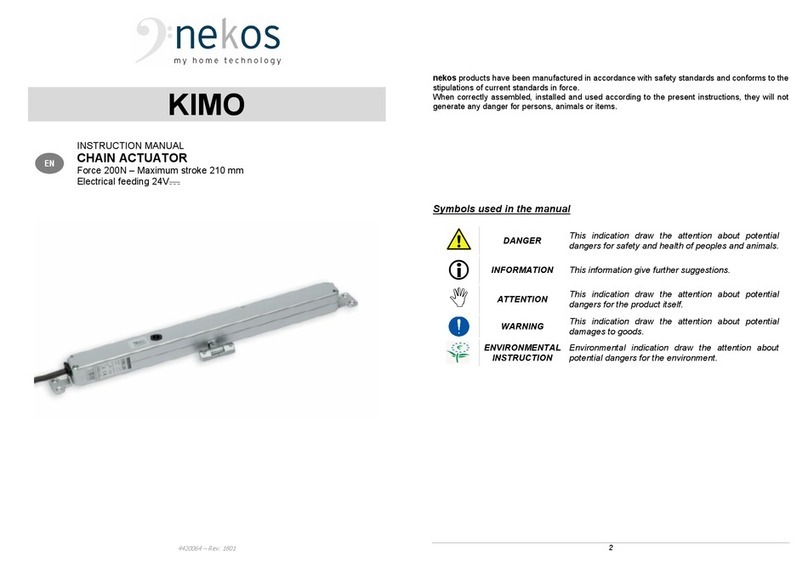
nekos
nekos KIMO User manual
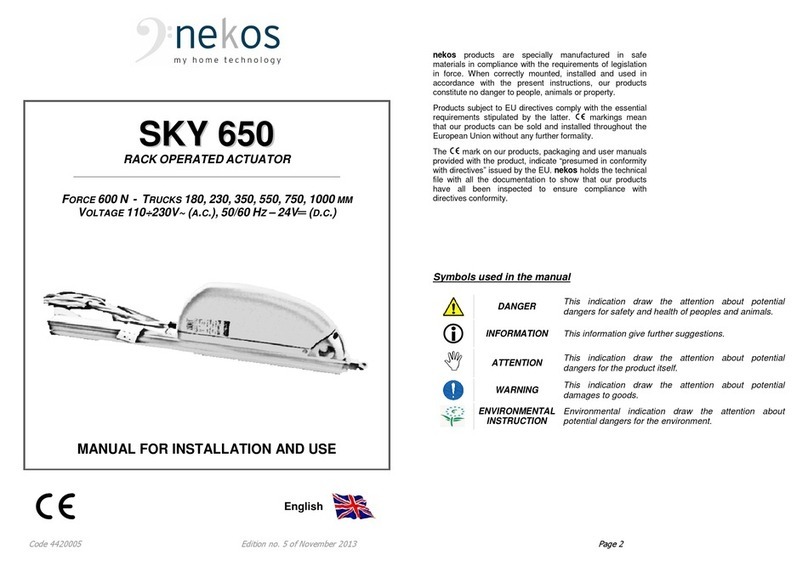
nekos
nekos SKY 650 User manual
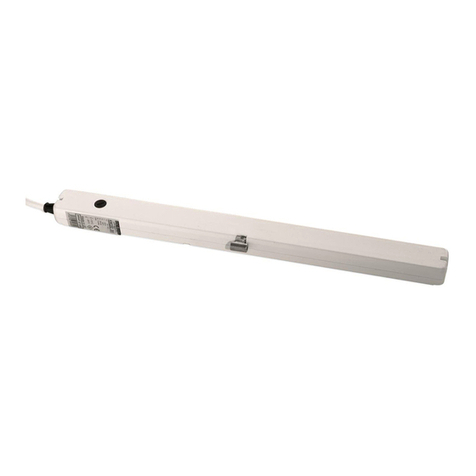
nekos
nekos KIMO 202 User manual
